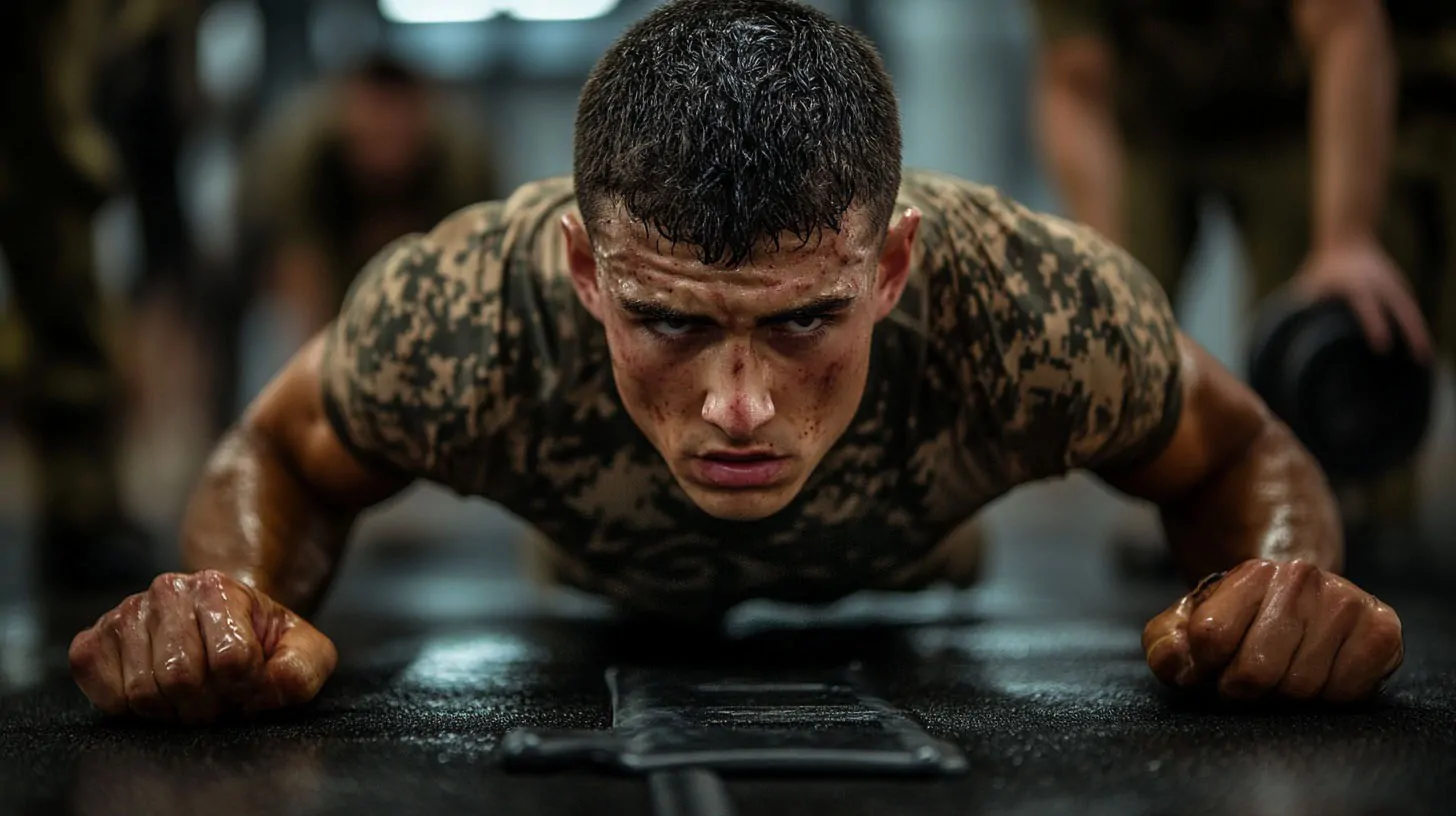The Army Combat Fitness Test (ACFT) is central to assessing the physical readiness of soldiers. It is designed to ensure personnel can meet the rigorous demands of military service.
The six-event test measures various aspects of fitness, such as strength, endurance, and agility.
The ACFT plays a vital role in maintaining operational effectiveness by setting clear standards for physical performance.
Preparing for the ACFT is crucial for soldiers to uphold these standards and fulfill their roles effectively.
Proposed Changes for 2025
The Army Combat Fitness Test (ACFT) is expected to undergo significant adjustments in 2025 based on Rand Corporation’s research insights.
Key findings suggest that raising physical standards could enhance combat readiness and overall operational efficiency.
Proposed updates include raising the minimum passing scores for soldiers in combat-arms roles, with two key benchmarks under consideration:
- 450-point baseline, which would significantly raise standards
- 420-point minimum that aligns with internal Army planning discussions
These adjustments aim to ensure soldiers meet the rigorous physical demands of combat while balancing fairness and feasibility across the force.
These proposed changes are designed to align fitness requirements with the physical demands of modern military operations. However, such adjustments come with implications for training and preparation.
Soldiers in combat-specific roles would face heightened expectations, necessitating focused efforts to meet these elevated standards.
The Army’s Fitness Standards May Shift in 2025. But How Much Tougher Will They Be? https://t.co/LkzcZjgGG1
— Military.com (@Militarydotcom) December 31, 2024
- Soldiers will need to dedicate more time and resources to improve performance in areas such as:
- Strength
- Endurance
- Agility
- Stricter scoring could result in lower initial pass rates, especially for those unprepared for higher benchmarks.
- Elevated expectations could challenge soldiers’ mental stamina, requiring greater determination and focus during preparation.
The feasibility of these changes is being thoroughly evaluated. The goal is to ensure that all soldiers can achieve the required fitness levels while maintaining fairness across different Army components, including active duty, the National Guard, and reserves.
While some units may find it challenging to adapt, the emphasis remains on building a force capable of meeting the physical demands of combat scenarios.
Timeline and Consequences for Implementation
The transition to the Army Fitness Test (AFT) will follow a phased rollout:
- June 1, 2025: AFT becomes the official test of record for all soldiers
- January 1, 2026: Enforcement begins for Active Duty combat MOS
- June 1, 2026: Enforcement for Reserve and National Guard components
Soldiers in combat roles must pass the AFT within two attempts.
Those who fail to meet the required 350-point threshold after their second attempt may face reclassification into a different, non-combat MOS.
It underlines the importance of early preparation and consistent training.
Current ACFT Structure and Scoring
The Army Combat Fitness Test (ACFT) is designed to evaluate essential physical fitness components through six specific events.
Each event addresses a distinct aspect of fitness, providing a comprehensive assessment of a soldier’s readiness to handle the physical demands of military operations.
Below is a detailed breakdown of the six events and their objectives:
| Event | Description |
|---|---|
| Three Repetition Maximum Deadlift | Assesses lower body and core strength through weighted barbell lifts, simulating heavy equipment tasks. |
| Hand Release Push-Up | Tests upper body endurance and core stability with push-ups involving hand release. |
| Sprint-Drag-Carry | Evaluates speed, agility, and strength through sprints, sled drags, and kettlebell carries. |
| Plank | Measures core endurance with a timed plank hold. |
| Two-Mile Run | Assesses cardiovascular and muscular endurance with a timed two-mile run. |
Each of these events contributes to a holistic view of physical readiness. Scoring is determined using performance norms adjusted for age and gender.
Soldiers must meet minimum scores in all six events to pass. Higher scores indicate superior fitness levels, with the maximum scores reflecting elite physical performance.
Achieving a high overall score requires consistent practice and targeted training for each event.
Soldiers are encouraged to identify weaker areas and dedicate additional effort to improve their overall results.
Implications for Soldiers
So when I got out an the ACFT was in its development it was billed as a gender neutral, job based test. It was that when fully implemented in 2021, but I just found out it changed in 2022, for equity. (Picture below) this is definitely something @PeteHegseth should reverse. Also… https://t.co/zcdg24SmY0 pic.twitter.com/4O4dwfFkxr
— Sara Higdon (@SaraHigdon_) January 15, 2025
- Active duty
- National Guard
- Reserve forces
The proposed adjustments, particularly for combat-arms personnel, indicate a need for enhanced physical preparation tailored to specific role requirements.
These adjustments are expected to impact pass rates, particularly for positions requiring the highest physical performance levels. The introduction of stricter benchmarks underscores the need for soldiers to reassess their fitness routines and prioritize areas requiring improvement.
To adapt successfully, soldiers should take advantage of available resources and develop disciplined training habits.
- Identify specific ACFT events where performance needs improvement and allocate extra training time to those areas.
- Include strength, endurance, agility, and flexibility exercises to prepare for all six events.
- Take advantage of resources like the Holistic Health and Fitness (H2F) program for professional guidance on training, nutrition, and recovery.
Maintaining combat readiness remains a priority, and soldiers must view these changes as an opportunity to enhance their physical capabilities.
Early preparation will not only ensure compliance with updated standards but also foster confidence and resilience in meeting the demands of military service.
Preparation Strategies
Achieving success in the ACFT requires dedication and a structured training plan. Soldiers aiming to meet the proposed standards need to prioritize event-specific exercises to enhance their overall performance. Using exercises such as ballistic stretching is quite a common thing today.

Below are key strategies to help improve in each area of the ACFT:
| Focus Area | Recommendations |
|---|---|
| Strength-Based Training | Focus on deadlifts, squats, and kettlebell swings for lower body and core strength. |
| Agility and Speed | Use sprints, sled pulls, and kettlebell carries to improve speed and endurance. |
| Core Stability | Perform planks, side planks, and bird-dog drills for core strength and stability. |
| Cardiovascular Stamina | Combine steady runs, tempo runs, and intervals to build running stamina. |
The Holistic Health and Fitness (H2F) program provides additional resources, offering guidance on nutrition, recovery, and mental readiness. Soldiers can leverage these tools to optimize their performance and recovery.
It is crucial to focus on weak areas. Soldiers should analyze their performance in previous tests and prioritize training in those events where improvement is needed.
Combining proper nutrition, adequate rest, and a balanced exercise plan will ensure steady progress and preparedness for the ACFT.
Early and consistent preparation is the key to exceeding expectations and maintaining readiness for future standards.
The Bottom Line
The ACFT remains a cornerstone of ensuring soldiers are physically prepared for the demands of service.
As changes roll out, all soldiers, especially those in combat roles, must familiarize themselves with the updated scoring rules, role-based distinctions, and timelines.
Staying ahead of these changes will help soldiers protect their MOS classification, avoid career disruption, and ensure they remain ready to meet the Army’s mission-critical demands.
Sources
- RAND – Setting Higher Close Combat Standards for the Army Combat Fitness Test
- Military – The Army’s Fitness Standards May Shift in 2025
- US Army – Fitness Requirements
- Army National Guard – Holistic Health and Fitness
Related Posts:
- How Much Does a Modern Soldier’s Gear Cost? Breaking…
- Is Ibiza Safe in 2025? What You Need to Know Before You Go
- What to Know About Physical Fitness Requirements for…
- Gunshot Wound Care - What You Need to Know to Save a Life
- What are Bulletproof Vests Made of? - Important…
- Is Mallorca Safe to Visit? What to Know About Crime…







